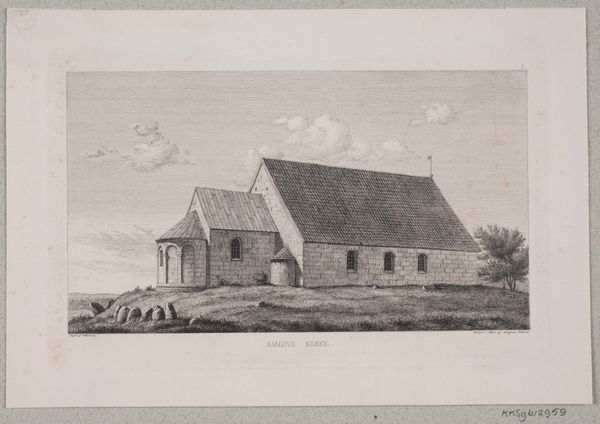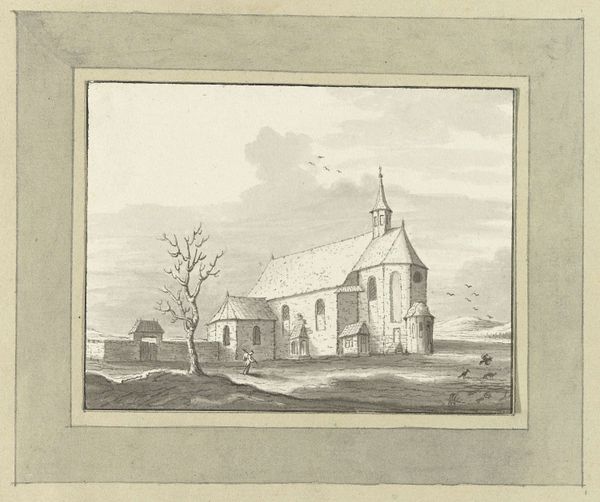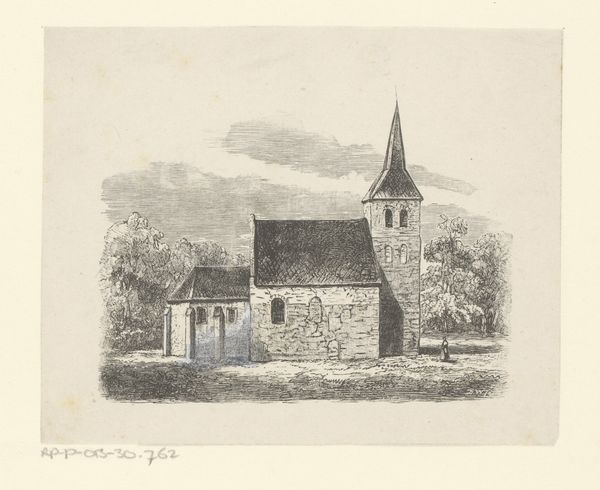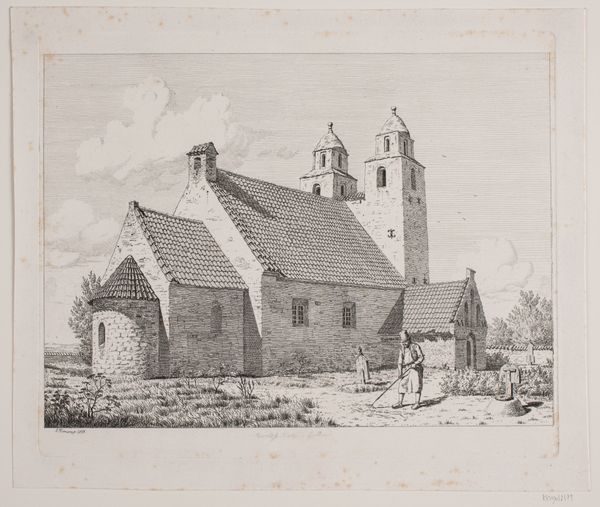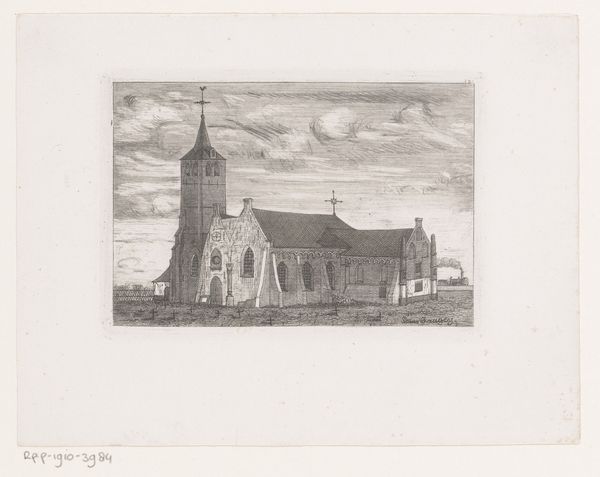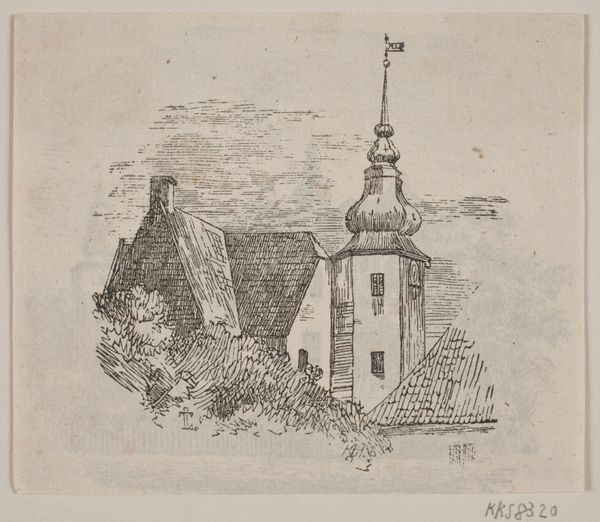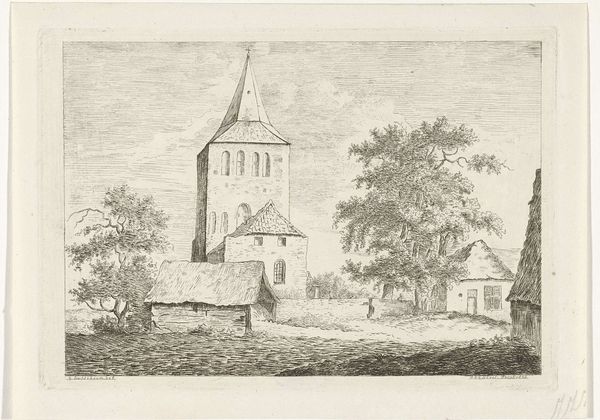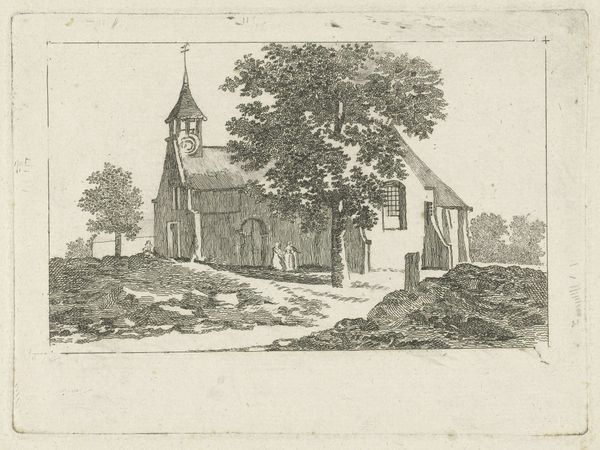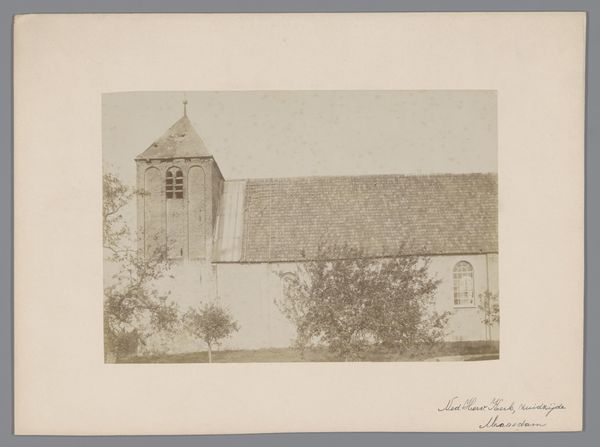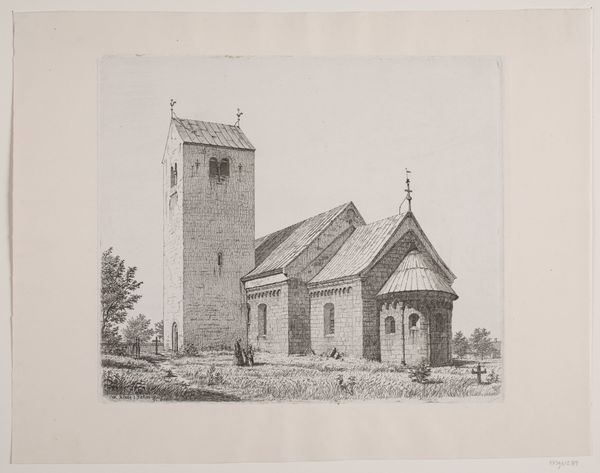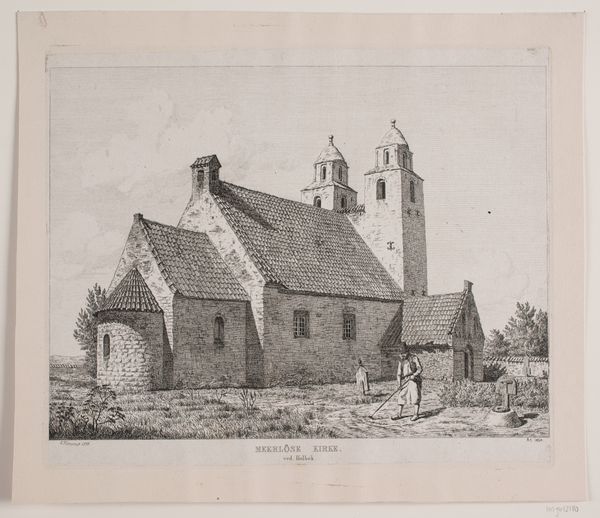
print, etching, engraving, architecture
# print
#
etching
#
landscape
#
etching
#
form
#
line
#
history-painting
#
engraving
#
architecture
#
realism
Dimensions: 107 mm (height) x 143 mm (width) (plademaal)
Curator: Today, we're looking at Peter Herman Rasmussen's etching, "Bjernede Kirke," created in 1847. It's currently housed at the SMK, the National Gallery of Denmark. Editor: My first impression is one of quiet solemnity. The delicate lines create a stark yet strangely comforting depiction of this rounded church. Curator: The architecture really speaks, doesn't it? Notice the craftsmanship evident in the printmaking. The careful labor taken to transfer image onto plate through the lines describing it. This tells us something about craft's transition toward artmaking during this period. How does Rasmussen challenge existing artistic categories of architecture rendering here? Editor: I see your point about labor but I am most drawn to its structure. That stark white church form looms so beautifully in front of what seems a wide landscape, making effective use of the rule of thirds; did you also see the way he framed this whole scene using a semi-elliptical enclosure, drawing more attention toward the architecture and negative space around it? It has created something special by carefully planning this spatial geometry in the composition. Curator: Absolutely! And thinking about the socio-historical context, printmaking was becoming more accessible at this time, and it makes you wonder who was this imagery made for? Was he involved in the changing distribution networks? Did that changed context affect his choices on production? How does the shift influence reception? Editor: Shifting the conversation, have you noticed how little emphasis he places on detail? And with its heavy usage of lines? That almost reminds me how certain kinds of minimalistic designs can also be compelling using lines only, without making it messy at all; what’s your take regarding this element? Curator: Good catch! By minimizing detail in favour of linear economy, Rasmussen guides the viewers’ attention to its subject. What strikes me is that the limited access print provides gives power of portrayal for this sacred space. It isn’t about accurate replication here but instead is about symbolic access in distributed media through etching and print work as a method for distributing meaning amongst people interested during the nineteenth century in Danish heritage—a sort of portable iconography of sacred places for lay audiences otherwise alienated or geographically distanced from that space within society at large. Editor: A thought-provoking observation about the accessibility of architectural sites within history itself! It has certainly allowed me, through your guidance as a medium too—and without that initial visual impact—to have better comprehension while appreciating what's presented now which could have potentially been otherwise easily dismissed, proving this etching's formal power itself. Curator: Exactly! It makes us rethink not only its production means but also where these creations can sit nowadays, with all our technology involved; these echoes give continuity beyond Rasmussen ever thinking this to ever exist today.
Comments
No comments
Be the first to comment and join the conversation on the ultimate creative platform.

